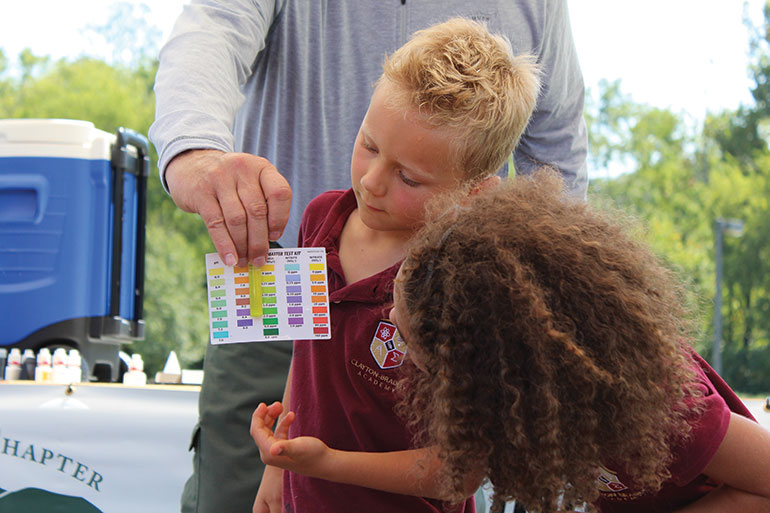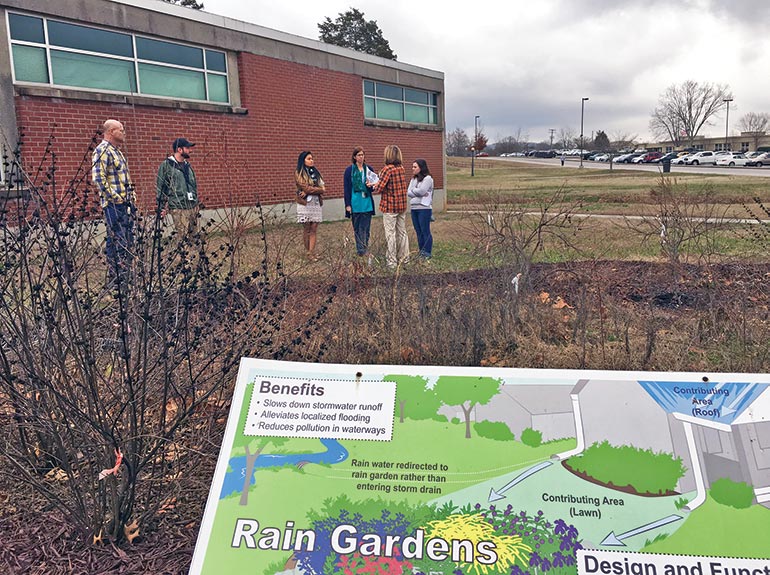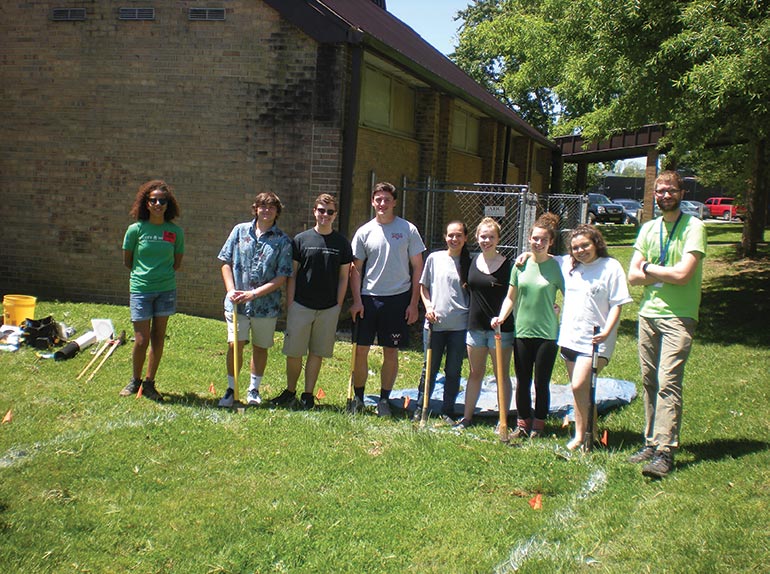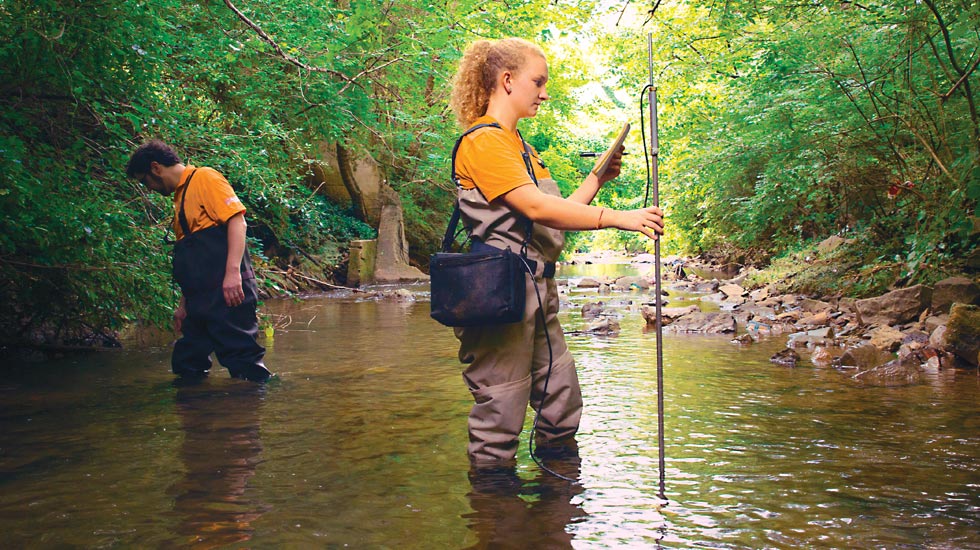How’s the Water?
The State of Tennessee will soon gain some valuable information on five of its watersheds, thanks to a team of CEE researchers.
A group of faculty and students, led by Professor John Schwartz and Assistant Professor Jon Hathaway, are working through a USDA grant to study projected water supply and demand in the Tennessee and Cumberland River Basins.
By using hydrological modeling, field monitoring, and data analysis, the team hopes to better understand water supply resilience for agriculture in Tennessee in the face of future changes in climate, population, and land use.
The team will develop water budgets for the Obion (west), Duck and Red (middle), and Hiwassee and Nolichucky (east) watersheds. To date, budgets for the Hiwassee and Obion watersheds are nearly finished, while data collection and modeling continues for the Duck watershed.

Hydrological modeling simulations will provide scenarios to determine where water allocation issues may arise when shocks, such as droughts, hit the system, with a particular focus on farmers using irrigation. The team’s final results will fill a crucial need for the state, which currently doesn’t have viable estimates on this water use.
Under CEE guidance, The Tennessee Water Resources Research Center and the Town of Farragut are working together to identify, locate, and assess the different stormwater structures that are owned by the town. The multi-year project is a phased effort that will canvas Farragut’s different residential communities.
Not only is this work mandated for maintaining Farragut’s MS4 permits, but it will also lead to the development of a stormwater infrastructure improvement plan for the town.

Assistant Professor Kim Carter and her UT students conducted K-12 STEM outreach in the community at Lenoir City STEM Quest, a camp, and at Clayton-Bradley STEM Academy. At Lenoir City STEM Quest, students learned about electrochemically treating water to remove methylene blue by using batteries and persulfate and/or hydrogen peroxide. The activity included experimental set-up and quantitative and qualitative observations of the water treatment. At the end of the week, students also learned how to use citrus fruit to power lightbulbs.
At Clayton-Bradley STEM Academy’s inaugural Pistol Creek Day, Carter and her students presented a module showing STEM students how to measure the concentrations of nitrate, ammonia, and chlorine in water from Pistol Creek using field kits. The activity was designed to educate about methods that can be used for water quality measurements. Carter also sat on a panel discussion about the different careers in science and engineering.
Progress continues on Hathaway’s NSF CAREER Award research, where he and his team of students are working to better understand stormwater control systems. The project, which is in collaboration with NC State University, hopes to provide better estimates of water movement in green infrastructure systems. Testing of the model began this summer.
Hathaway’s team is also working with Knoxville-area high schools to build STEM knowledge and expose them to the issues of urbanization and stormwater runoff. They train teachers and students to collect and analyze data from rain gardens on and near their campuses. They have sparked community impact in just a year’s time.

“One of the schools, West High, didn’t have a garden, so we designed and constructed one with help of the students,” Hathaway said. “We have now nearly installed all the monitoring equipment for the four schools, and students from the schools will begin collecting the data in the fall.”
In a related project, supported by UT’s Institute for a Secure and Sustainable Environment, Hathaway’s group is using sensor-based monitoring to chart differences in urban microenvironments in Knoxville neighborhoods. They are trying to understand how residents perceive their local environment. They have published four journal articles on the subject and anticipate more.
“This collaboration among diverse faculty from social work, geography, and engineering has also spurred numerous other collaborations, many of which include faculty from CEE,” said Hathaway.
Additionally, Hathaway’s team are collaborating with the US Forest Service to understand the health and function of trees in green infrastructure systems. Through a health survey of trees in existing GI systems, a field study, and a laboratory column study, the team hopes to better refine what types of trees are most healthy and operational inside the harsh bioretention environment. Testing of an improved GI model began this summer.

Professor John Schwartz was guest editor of a special issue of Water on stream ecosystems and restoration, in which he was able to attract an international suite of well-known researchers to submit articles. He published an article on an ecohydraulic approach to stream restoration that has received attention by the US Forest Service and other government agencies.
Current research seeks to develop a watershed-scale approach to restoration planning by linking the USEPA Stormwater Management Model with the USDA Concepts model for stream sediment transport and bank erosion.
Four projects with TDOT include characterizing water quality from road cuts through pyrite geology, developing a predictive model for bridge pier scour in cohesive soil, and assessing the performance of construction site sediment basins.
Water quality research also continues in the Great Smoky Mountains National Park, with a study of the biogeochemical processes associated with acid deposition from air pollution, and the impacts to aquatic biota from stream acidification.
